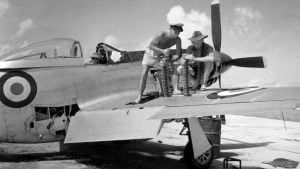Pushing back on the Chinese projection of power into the Pacific is a key priority for the US and the allies.
At a recent Williams Seminar, a senior Australian Army official argued that China had already pushed its way out to achieve its first island defense strategy.
Clearly, it is time to do something.
That same Army officer highlighted that he saw one of the roles of the Army as providing protection for any Australian engagements where forces might be based or operate deeper into the Pacific.
In a September 20, 2018 article in The Australian, Ben Packham, provided some insight into where one of those engagements might be.
“Australia is working on plans with Papua New Guinea to develop a joint naval base on Manus Island, edging out Chinese interest in the strategically vital port with a new facility that would be capable of hosting Australian and US warships.”
The article went on to note that “Plans for the joint facility were under way as Australia moved to block Chinese involvement in another regional military development — the upgrade of Fiji’s Black Rock military camp in Nadi. Mr Turnbull led the negotiations with Fiji President Frank Bainimarama to ensure Australia became the sole foreign donor in the redevelopment of the base, which will be used as a regional training hub for South Pacific defence forces.”

Packham quoted a leading Australian analyst who described how he saw the potential development.
“Australian Strategic Policy Institute director Michael Shoebridge, a former Defence Department official, said using Manus as a base for PNG, Australian and US forces “makes good sense … It would help give the US a wider operating and support footprint in the Pacific, and give Australian naval forces a location 2000km away from Darwin and some 1600km north of Cairns — the two closest Royal Australian Navy bases”.
He said the PNG Defence Force, which will receive three new Guardian-class patrol boats from Australia, would be a major beneficiary, gaining new facilities and a closer working relationship with Australian and US navies.”
The Evolving Role of Australian Ground Forces in Australia’s Deterrent Strategy
An article published in the London Times on September 21, 2018 highlighted The Australian story and added some additional comments as well.
Australia is all too aware of the vast amounts of money that China has been pouring into Papua New Guinea, which won independence from Australia 43 years ago. The nation will host the Asia-Pacific Economic Co-operation Summit (APEC) in November, and President Xi will attend in person, arriving two days early for a state visit. China has paid for and built the multimillion-dollar convention centre for the meeting, as well as new highways in Port Moresby, the capital.
Mr Xi is expected to use the summit of Asian and Pacific leaders to press six small Pacific nations — not including Papua New Guinea — to cut diplomatic ties with the self-governing island of Taiwan, which China insists is part of its territory. He is also expected to announce a free-trade agreement between China and Papua New Guinea, and possibly another substantial construction project to rival the one that created the first transport links between Port Moresby and the nation’s remote highlands.
Australia has done what it can to block China’s growing influence elsewhere in the Pacific. This year it stopped China rebuilding the Black Rock military camp on Fiji by itself becoming the sole foreign donor.
In June, it prevented Huawei, the vast Chinese telecommunications firm, laying internet cables linking the Solomon Islands, east of Papua New Guinea, with Australia. The fear was that Huawei was seeking to gain access to a broadband hub in Sydney, and that the security of the country’s communications network could be compromised.


